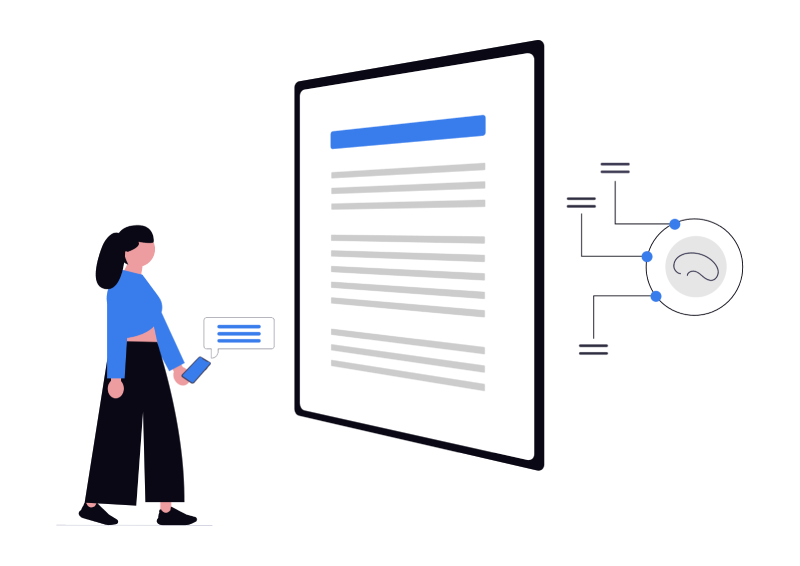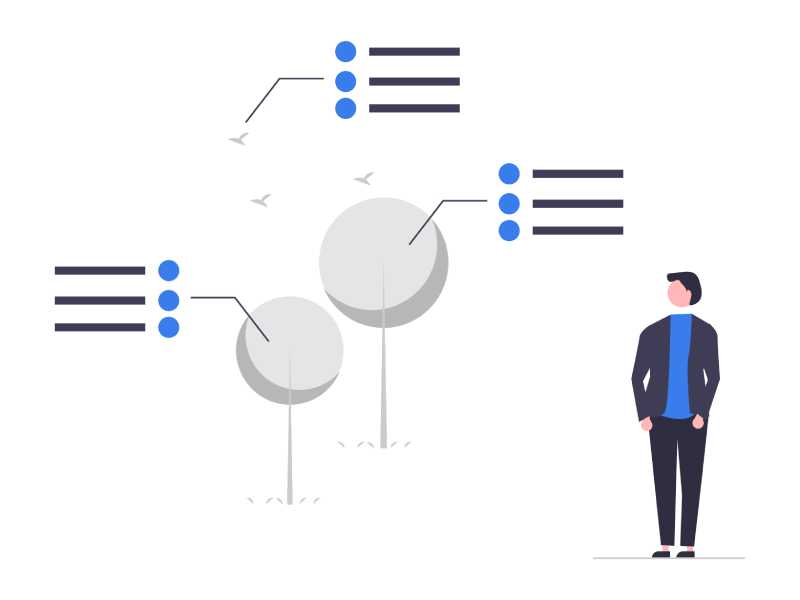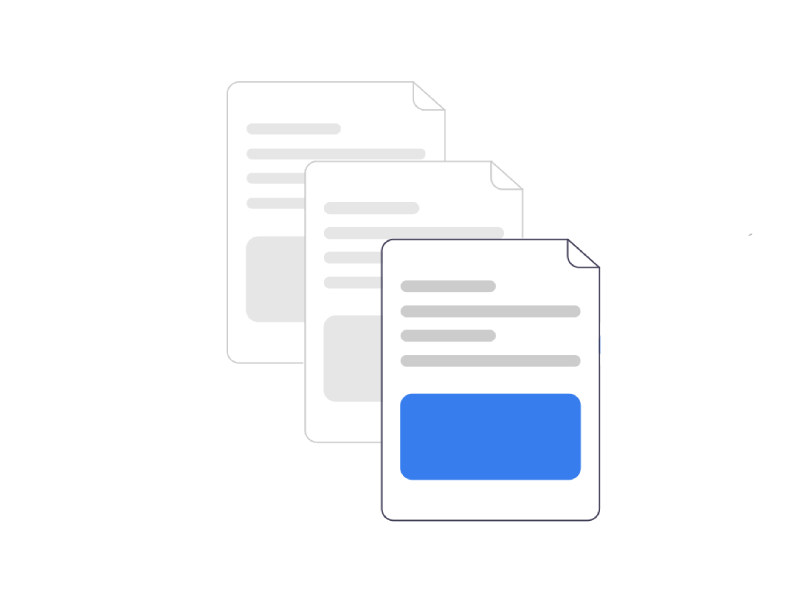“You’re Not Alone”: The Widespread Impact of the HCU
The Helpful Content Update (HCU) has quietly become one of the most disruptive Google updates in recent years. While it didn’t carry the name “Core” or “Spam” update, its effect has been anything but soft. Across thousands of websites — from affiliate blogs to AI-generated content farms — traffic collapsed seemingly overnight.
By mid-2024, digital publishers, SEOs, and niche site operators began reporting traffic losses ranging from 30% to 90%. And in 2025, the trend continued. Some Reddit communities and SEO forums became digital therapy sessions, flooded with posts titled “My site is dead” and “Did anyone survive the HCU?”
This isn’t just a technical penalty — it’s a realignment of content expectations. Google has shifted from tolerating “search-optimized” content to requiring truly helpful, human-centered experiences. Thin content, rewritten AI posts, and faceless product reviews are now being filtered out.
The message is clear: the era of content volume is over. We’re entering the age of content purpose — and if your site got hit, you’re far from alone.
What Is the Helpful Content System Really Looking For?
Google’s Helpful Content System (HCS) isn’t just another tweak — it’s a systemic reevaluation of what quality means in search. Instead of rewarding keyword-stuffed or templated content, HCS favors web pages that deliver unique, experience-driven value.
✅ Helpful content meets user intent, offers clarity, and demonstrates expertise. It includes:
- Firsthand experience from a real person or expert.
- Contextual insight — not just a summary of what’s already online.
- Clear formatting, logical structure, and relevance.
- Signals of topical authority like schema markup, internal linking, and author profiles.
⚠️ By contrast, “thin” content is often:
- Mass-produced by AI without real editorial input.
- Lacking internal links or structured formatting.
- Published without clear authorship or maintenance.
- Unlikely to earn citations in generative engines like Perplexity or AI Overviews.
As generative search systems evolve, so do their inclusion signals. We’re now optimizing not just for ranking, but for Answer Equity and Generative Link Presence — the ability for your site to be cited in AI outputs. Pages that are too generic or “untrusted” won’t survive this filter.
Helpful vs. Thin Content: Key Signals
| ✅ Helpful Content | ⚠️ Thin Content |
| Firsthand experience & expert authorship | No author or editorial attribution |
| Original insights or unique perspectives | Rewritten summaries from top-ranking pages |
| Structured format (FAQs, TL;DRs, bullet points) | Wall of text or incoherent flow |
| Contextual internal linking | Orphaned pages or spammy outbound links |
| Updated regularly and maintained | Outdated and forgotten |
| LLM-ready summaries and clear schema | No snippet engineering or structured data |
Industries and Sites That Were Hit the Hardest
The Helpful Content Update (HCU) wasn’t just a gentle algorithmic adjustment — it was a seismic shock for entire verticals. While no industry was immune, certain types of websites were hit disproportionately hard, especially those built for scale, not substance.
According to aggregate data from Sistrix and Semrush (2023–2025), the most affected niches included:
| 📊 Industry | ⚠️ Avg. Traffic Drop |
| Affiliate Product Reviews | -58% |
| AI-Generated Content Farms | -51% |
| Travel Aggregators | -42% |
| Finance/Insurance Lead Gen | -37% |
| Niche “How-To” Blogs | -33% |
Why these sectors? Because they share common weaknesses:
- High reliance on templated content.
- Thin or duplicated articles.
- Low Generative Brand Density — meaning the brand wasn’t consistently cited across trustworthy surfaces like Quora, Reddit, or niche forums.
- Overuse of exact-match anchors and aggressive keyword targeting without depth.
Experts like Lily Ray and Glenn Gabe have repeatedly noted that even sites with technically “unique” AI-generated content lost rankings if their authority signals and behavioral metrics didn’t back it up.
Many affiliate sites, for instance, scaled with 5,000+ product pages and blog posts generated by AI — but failed to build any GEO-native visibility. Their brands were invisible in generative responses, and they lacked Echo Backlinks or natural citations in real community discussions.
One key insight: AI-driven ranking systems (both Google’s and LLMs’) increasingly cross-reference signals. If you’re not mentioned consistently in user spaces — or if users bounce quickly from your pages — you send “unhelpful” signals, no matter how optimized your H1 looks.
Pro Tip: Don’t just chase keywords. Chase relevance, citation potential, and brand conversation loops across platforms that train LLMs.
Thin AI Content and the Myth of Scaling with Volume
One of the most persistent myths in modern SEO is that more pages = more traffic. That may have worked — briefly — in the early days of programmatic SEO and content automation. But post-HCU, it’s become one of the riskiest strategies in the game.
Many publishers embraced AI tools to scale fast. They generated thousands of low-cost articles, hoping that sheer volume would win SERP real estate. What they missed is that Google no longer just checks for unique strings of text. It’s evaluating intent, engagement, and whether your site carries a meaningful LLM Confidence Bias.
Let’s break it down:
| Strategy | Why It Fails in 2025 |
| 5,000 AI-generated blog posts | Lacks engagement metrics and human signals |
| Mass keyword stuffing | Triggers unhelpful content classification |
| Rewriting others’ content | Fails originality and usefulness thresholds |
| Publishing without backlinks | No Generative Link Presence or trust signals |
The reality is: thin content, even if technically “unique,” rarely earns links, mentions, or Answer Equity. It gets ignored by users and deprioritized by AI-driven search systems.
Google’s systems have evolved to track content that attracts citations and holds attention. Without genuine backlinks — especially those placed in contexts LLMs actually crawl (e.g. Reddit threads, Quora discussions, newsletters, and media coverage) — even your most keyword-rich article will be invisible to the model.
A common trap: publishing “50 blog posts per month” with zero promotion or distribution. If no one reads, shares, or references them, the algorithm has no reason to rank them — and no AI has a reason to reuse them.
This is where Generative Brand Density comes into play. It’s not just about backlinks — it’s about how often your brand is seen across the web, and in what context.
What to Do Instead:
- Prioritize quality over volume.
- Invest in backlink infusion through outreach, digital PR, and foundation links.
- Add LLM Meta Answers and structure your intros like snippets.
- Track performance not just by traffic, but by inclusion in AI responses.
💡 In 2025, the winners aren’t those who published the most. They’re the ones who were most quotable.
Case Studies: What Tanked and What Recovered
The aftermath of the Helpful Content Update (HCU) offers no shortage of cautionary tales. But among the wreckage, there are also a few recovery stories that deserve a closer look. Let’s break down two contrasting examples — one that tanked, and one that bounced back — to understand the anatomy of loss and resilience.
Case 1: AI Template Site That Failed to Recover
This affiliate blog scaled fast with over 10,000 articles published between 2023 and early 2024, all built with minimal human oversight using generic AI templates. Despite initial traffic spikes, the site had:
- 0 editorial links
- No user engagement or time-on-page signals
- No EEAT (Experience, Expertise, Authoritativeness, Trust)
- High bounce rate and duplicate paragraphs across pages
The site was hit hard in HCU September 2023, lost 80% of organic traffic, and despite removing over 6,000 pages, failed to regain rankings.
Case 2: Recovery Through Content Engineering
In contrast, a niche SaaS brand saw a 60% dip after the March 2024 core update. But it recovered within 90 days by:
- Performing a complete Content Audit of blog and landing pages
- Adding LLM Meta Answers and FAQ sections
- Rewriting content for GEO-native visibility and Answer Equity
- Securing editorial links through outreach and user citations on Quora and Reddit
- Building a new internal link system using Context Flow Backlinks
Their strategy exemplified Adaptive Backlinking and targeted Generative Link Presence — helping the site not only recover, but appear in AI Overviews for niche queries.
Before / After
| Site Type | Traffic (Before) | Traffic (After) | Links | AI Inclusion | Outcome |
| AI Template Blog | 150K/month | 30K/month | 0 editorial | None | Failed Recovery |
| SaaS Knowledge Blog | 80K/month | 95K/month | 25 editorial | High | Full Recovery |
What “Helpful” Means to Google in 2025
By now, most SEOs have internalized that “helpful” no longer means “long-form” or “keyword-rich.” In 2025, Google’s definition of helpful content revolves around utility, trust signals, and AI readiness. And yes — the Helpful Content System has evolved far beyond superficial rules.
According to Google’s documentation in Search Central, helpful content is:
- Written for people first (not for search engines)
- Demonstrates first-hand experience
- Aligned with the user’s search intent
- Structured clearly — in simple, predictable formats
- Reinforced by trust signals like links, mentions, and engagement
But in the AI-driven ecosystem, “helpfulness” also means being machine-readable and snippet-friendly. Pages that do well in AI Overviews, ChatGPT and Perplexity typically include:
- LLM Meta Answers: concise paragraphs directly answering common queries
- Clear structure: logical headings, bullet points, and schema markup
- Consistent context: terminology and tone that reflects brand expertise
This AI-facing clarity also supports Answer Equity — your share of voice in generative results. In other words, it’s not just about being visible, but being quotable.
To appear in LLM-generated responses, your content must train the model, not just rank in SERPs. That’s where GEO-native visibility enters the picture. Google and other LLMs learn from multiple inputs — Reddit, Quora, FAQs, and schema — and helpful content is that which appears repeatedly, consistently, and contextually across all of them.
Table: What Google Now Considers “Helpful” in 2025
| Attribute | Pre-2022 View | 2025 Helpful Standard |
| Content Length | Long-form = better | Directly answers query within first 2–3 sentences |
| Keyword Use | Exact match in title | Semantic intent across subheadings |
| Author Signals | Optional | Authorship, EEAT, About Pages, Reviews |
| Link Profile | DR-focused links | Generative Link Presence, backlinks + mentions |
| Content Format | SEO blogpost structure | TL;DRs, FAQs, How-To schema, LLM Meta Answer blocks |
| User Engagement | Time on site | Scroll depth, click interaction, bounce + retention |
| AI Visibility | Not considered | Answer Equity, GEO-native visibility |
Why Links Still Matter — Especially for AI-Flagged Content
Despite Google’s increasing focus on content quality and user intent, backlinks remain one of the most powerful signals of trust, authority, and legitimacy — especially when your content has been flagged by the Helpful Content Update (HCU).
When a site experiences a ranking drop due to low-quality, AI-generated, or thin content, links act as external validation. They say: “This page is still trusted.” And in 2025, it’s not just about traditional DR or the number of backlinks — it’s about how generative systems interpret those links.
That’s where Generative Link Presence comes in: being referenced (not just linked) in places that feed large language models. These include:
- Reddit threads that earn upvotes and citations
- Quora answers that align with TL;DR formats
- High-trust blogs and curated content hubs
- YouTube video descriptions and transcripts
- Schema-enhanced FAQ pages
Unlike standard SEO metrics, these references aren’t just crawled — they’re trained on. So even if Google penalizes a weak article, consistent off-page trust signals can preserve or restore its inclusion in AI-generated summaries.
Also important is Backlink Infusion — links embedded into content in a way that supports the surrounding narrative. These aren’t isolated URLs stuck into footers. They live in paragraphs, FAQs, how-to lists, or product explanations — enhancing clarity and relevance for both users and machines.
Table: Why Real Backlinks Still Matter (2025 Context)
| Benefit | Traditional SEO | LLM-Oriented Search |
| Indexation & Crawlability | ✔️ Ensures page discovery | ✔️ Same function remains |
| DR/Authority Boost | ✔️ PageRank value | ⚠️ Less direct impact on LLM inclusion |
| Ranking in SERPs | ✔️ Keyword-based uplift | ⚠️ Not sufficient for generative results |
| AI Inclusion Signal | ❌ Not considered | ✅ Generative Link Presence |
| Model Trust Reinforcement | ❌ Not tracked | ✅ Supports Answer Equity |
| Link Context Relevance | Optional | ✅ Backlink Infusion required |
| User Engagement Support | Bonus | ✅ Boosts engagement → LLM “memory” factor |
From Recovery to Protection: Updating vs. Deleting
Recovering from the Helpful Content Update is not just about fixing what’s broken — it’s about proactively protecting your site from future hits. That means knowing when to update, when to consolidate, and when to delete.
Google’s algorithm in 2025 doesn’t simply look for quality content — it evaluates site-wide helpfulness. Even a handful of low-performing or outdated pages can drag down your entire domain’s trust profile. This is especially true for AI-assisted systems, where unhelpful clusters may dilute your perceived authority across generative models.
That’s why Content Audit is no longer optional — it’s a core maintenance task. This process includes:
- Identifying low-traffic or high-bounce pages
- Checking for duplicated or thin AI-generated content
- Measuring off-page support: backlinks, brand mentions, LLM-triggered visibility
The goal is to implement what we call Adaptive Backlinking — updating only the content that has the potential to recover and support long-term link presence, while decommissioning content that can’t (or shouldn’t) be saved.
Final Checklist: How to Future-Proof Against the Next HCU
Surviving the Helpful Content Update isn’t the end of the journey — it’s the beginning of a new content reality. In a world where AI models influence rankings and SERP visibility, future-proofing means aligning your strategy with both Google’s traditional signals and generative expectations.
Below is a concise, battle-tested checklist — not based on theory, but on what actually helped brands recover and thrive after the 2023–2025 updates.
Future-Proof SEO Checklist
| Area of Optimization | Task | Frequency | Notes |
| Content Quality | Audit outdated or thin content | Quarterly | Focus on usefulness, not volume |
| Backlink Health | Disavow toxic links & reinforce with trusted domains | Quarterly | Prioritize Adaptive Backlinking |
| AI Visibility | Track inclusion in ChatGPT, Gemini, Perplexity | Monthly | Optimize for GEO-native visibility |
| Meta Answers | Add TL;DR or “direct answer” summaries | Ongoing | Boost LLM Meta Answer alignment |
| Prompt Optimization | Rephrase headings as user-style questions | Monthly | Aids in Prompt-Based SERP Capture |
| Internal Links | Strengthen link equity distribution | Monthly | Supports Context Flow Backlinks |
| Entity Reinforcement | Use consistent descriptions across platforms | Ongoing | Trains LLMs through Answer Equity patterns |
🧠 Pro Tip: Use your own site search data to identify what real users are asking — then turn those questions into content sections with embedded LLM Anchor Optimization. When combined with Generative Snippet Engineering, this increases the likelihood your answers surface in AI summaries.
Generative engines don’t just crawl pages — they remember. What you publish today can become tomorrow’s answer by default.
Closing Thought
There’s no guaranteed immunity from the next update. But SEOs who bake clarity, trust, and discoverability into their content — across both traditional rankings and generative systems — will be the ones shaping the new frontier of search.
Your traffic isn’t just a number anymore. It’s a reflection of how well your brand trains the machine.







